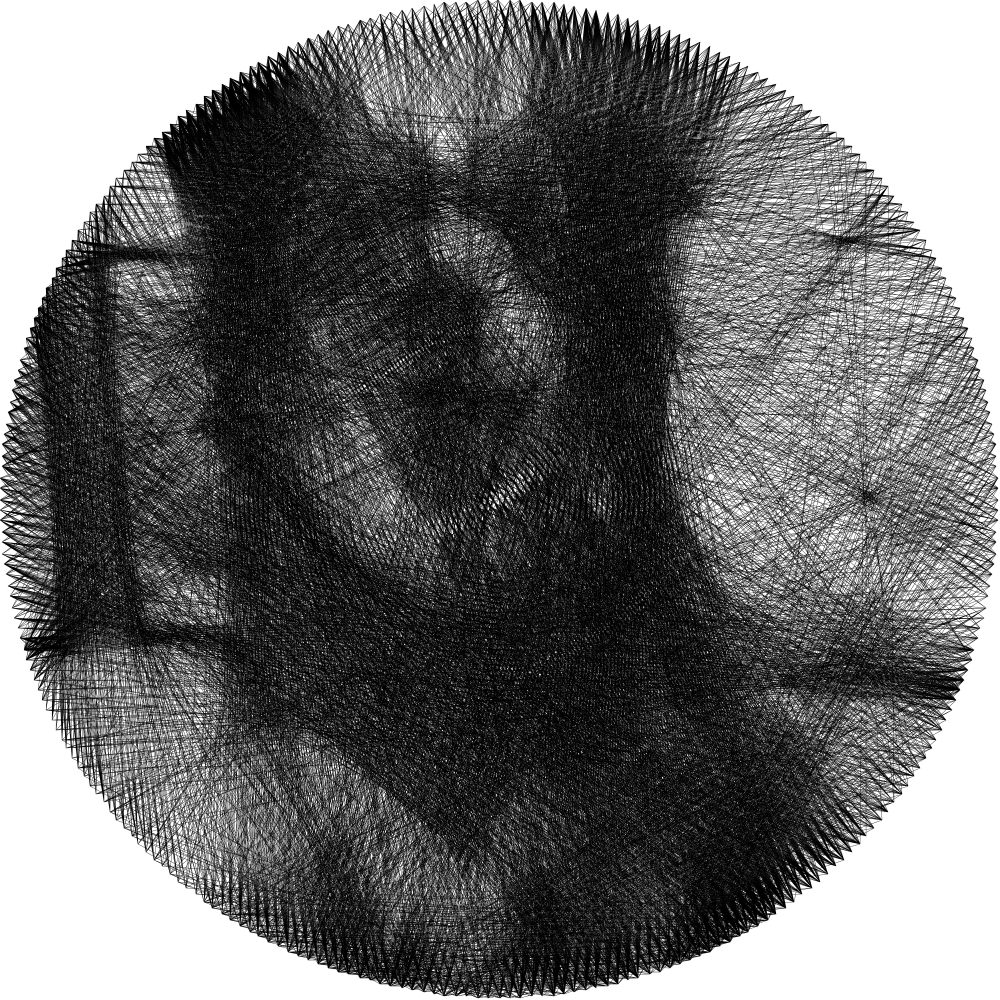Build advanced string art generators using Python. Master algorithmic approaches, leverage powerful libraries, and create custom solutions.
Building a string art generator in Python opens endless creative and technical possibilities. This comprehensive approach combines mathematical precision with artistic vision, creating powerful tools that transform digital images into intricate thread patterns.
Python Advantage
Python's scientific computing ecosystem provides unmatched capabilities for image processing, mathematical calculations, and visualization, making it the ideal choice for string art generation.
Core Python Architecture
A professional Python string art generator leverages multiple specialized libraries working in harmony. NumPy provides efficient numerical computing, PIL handles image processing, and Matplotlib creates stunning visualizations of the final artwork.
Basic Python Structure:
# Professional String Art Generator Python Implementation
import numpy as np
from PIL import Image, ImageFilter
import matplotlib.pyplot as plt
from scipy.spatial.distance import cdist
import cv2
class StringArtGenerator:
def __init__(self, num_pins=200, num_lines=3000):
self.num_pins = num_pins
self.num_lines = num_lines
self.pins = self._generate_pins()
self.lines = []
self.canvas = None
def _generate_pins(self):
# Generate evenly distributed pins around circle
angles = np.linspace(0, 2*np.pi, self.num_pins, endpoint=False)
return [(np.cos(angle), np.sin(angle)) for angle in angles]
def process_image(self, image_path):
# Load and preprocess image
image = Image.open(image_path).convert('L')
image = self._preprocess_image(image)
return self._generate_lines(image)NumPy Integration
Vectorized operations for lightning-fast calculations
PIL Processing
Advanced image manipulation and optimization
OpenCV Enhancement
Professional computer vision algorithms
Algorithm Implementation
Advanced Features
The core algorithm employs a sophisticated scoring system that evaluates thousands of potential thread connections. Machine learning techniques can enhance pattern recognition, while GPU acceleration dramatically reduces processing time for complex images.
Image Processing Pipeline
Professional image preprocessing transforms source images into optimal formats for string art generation. This multi-stage pipeline includes noise reduction, contrast enhancement, and edge detection to maximize the effectiveness of the thread placement algorithm.
Preprocessing Stages
Each image undergoes systematic optimization to extract the most important visual information while eliminating noise and artifacts that could compromise the final result.
Optimization Techniques
Advanced optimization strategies ensure maximum performance while maintaining artistic quality. Vectorized operations and intelligent caching minimize computation time without sacrificing precision.
Performance Optimization
Speed Enhancement
Python's performance limitations are overcome through strategic optimization and leveraging compiled libraries for computationally intensive operations.
Memory management becomes critical for large images and complex patterns. Efficient data structures and streaming algorithms enable processing of high-resolution images without overwhelming system resources.
Advanced Features
Modern Python string art generators incorporate machine learning and artificial intelligence to create more sophisticated and visually appealing results. These advanced capabilities represent the cutting edge of computational art generation.
Machine Learning Integration
Neural networks learn optimal thread placement patterns from master artworks, continuously improving output quality through training on curated datasets.
- • TensorFlow/PyTorch integration
- • Style transfer algorithms
- • Generative adversarial networks
Interactive Interfaces
Real-time parameter adjustment and preview capabilities enable artists to fine-tune results during the generation process.
- • Tkinter/PyQt GUI frameworks
- • Web interfaces with Flask/Django
- • Jupyter notebook integration
Professional Development
Building production-ready string art generators requires adherence to software engineering best practices. Proper testing, documentation, and deployment strategies ensure reliable performance in professional environments.
Quality Assurance
Comprehensive testing strategies ensure consistent results across different input types and system configurations. Automated testing pipelines catch regressions before they reach production.
Deployment Strategies
Modern deployment approaches enable scalable string art generation services that serve multiple users simultaneously while maintaining performance and quality.
Community and Resources
The Python string art community continues to grow, with open-source projects and collaborative development driving innovation. Educational resources and shared libraries accelerate learning and development for newcomers.
Open Source Projects
GitHub repositories showcase various approaches and implementations, providing valuable learning resources and ready-to-use components.
Educational Materials
Comprehensive tutorials and documentation guide developers through implementation details and advanced optimization techniques.
Future Innovations
Emerging technologies continue to expand the possibilities for Python-based string art generation. Quantum computing algorithms and advanced AI models promise even more sophisticated and efficient pattern creation capabilities.
Start Building with Python
Transform your programming skills into artistic expression. Build sophisticated string art generators that combine technical excellence with creative vision.
Explore Python String Art GenerationReady to Create Your Own String Art?
Transform your favorite photos into stunning string art patterns with our free generator
Start Creating Now